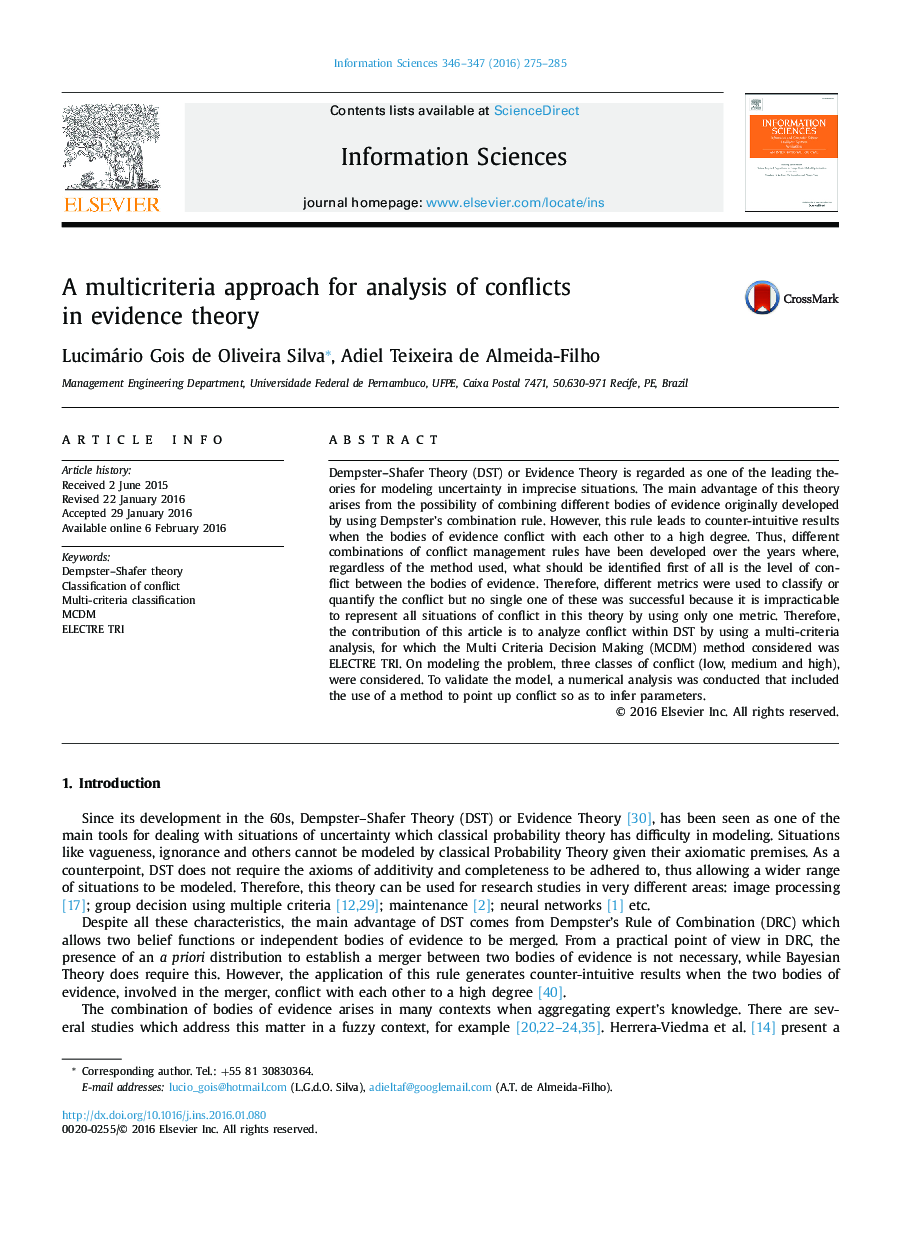| کد مقاله | کد نشریه | سال انتشار | مقاله انگلیسی | نسخه تمام متن |
|---|---|---|---|---|
| 392425 | 664770 | 2016 | 11 صفحه PDF | دانلود رایگان |
• We propose a new approach to model the conflict on DST as multi-criteria problem.
• We introduce a new subjective notion of conflict through a pseudo-criteria analysis.
• We present a numerical application of the proposed model based on 2 and 3 conflict measures.
• Therefore, it is showed that is possible to capture conflict in DST using more that to 2 criteria.
Dempster–Shafer Theory (DST) or Evidence Theory is regarded as one of the leading theories for modeling uncertainty in imprecise situations. The main advantage of this theory arises from the possibility of combining different bodies of evidence originally developed by using Dempster's combination rule. However, this rule leads to counter-intuitive results when the bodies of evidence conflict with each other to a high degree. Thus, different combinations of conflict management rules have been developed over the years where, regardless of the method used, what should be identified first of all is the level of conflict between the bodies of evidence. Therefore, different metrics were used to classify or quantify the conflict but no single one of these was successful because it is impracticable to represent all situations of conflict in this theory by using only one metric. Therefore, the contribution of this article is to analyze conflict within DST by using a multi-criteria analysis, for which the Multi Criteria Decision Making (MCDM) method considered was ELECTRE TRI. On modeling the problem, three classes of conflict (low, medium and high), were considered. To validate the model, a numerical analysis was conducted that included the use of a method to point up conflict so as to infer parameters.
Journal: Information Sciences - Volumes 346–347, 10 June 2016, Pages 275–285
